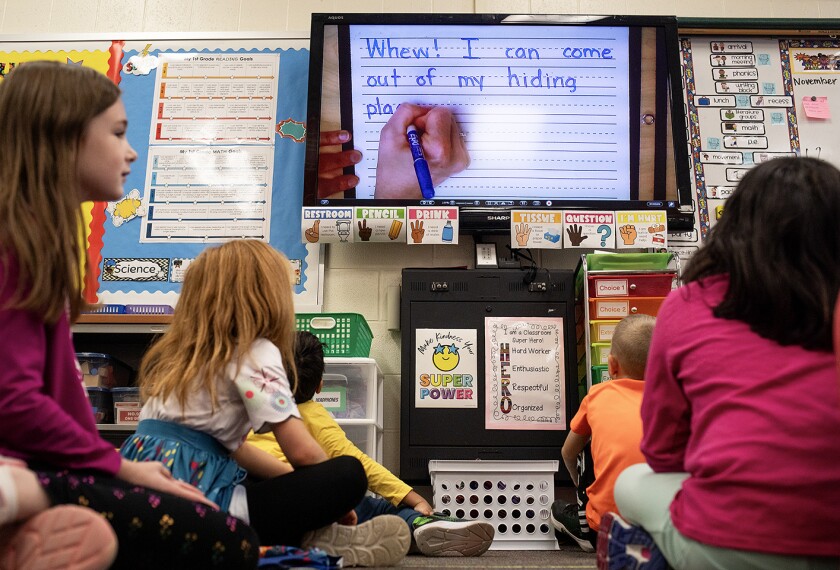Juneteenth, a holiday long recognized within the Black community that commemorates the end of slavery became a national holiday just last year.
And while it’s observed at a time when most K-12 schools are out on summer break, there is a value in teaching about the holiday and its legacy year-round, says Sonya Douglass, a professor of education leadership at Teachers College, Columbia University.
Douglass is also the founding director of the university’s Black Education Research Collective, which is developing a Black studies curriculum for preK-12 schools in New York City.
She spoke with Education Week on how and why educators teach about Juneteenth and the broader value for all students in expanding how Black history is taught.
This interview has been edited for length and clarity.
What is Juneteenth—its history and its legacy?
It’s really, in essence, the celebration of the end of slavery. It wasn’t until Union soldiers were able to notify slaves in Galveston, Texas [on June 19, 1865] that the Emancipation Proclamation was signed, that they were in fact free. And so it’s really a time of celebration, in celebrating independence and freedom for Black people. That’s really what the holiday is about.
Why and how should K-12 educators teach about Juneteenth in school, especially when several schools are out for the summer when the holiday is observed?
Well, I think it’s actually nice that the holiday is in the summer, because it really is about Black communities deciding how they spend the holiday. But I think it’s something that requires teachers to have a better understanding of Black history and studies throughout the school year.
It’s one of the things that the Black Education Research Collective is actually working on in the New York City public schools right now, in curating the first-ever preK-12, interdisciplinary Black studies curriculum. And what we’re finding about this process is that there’s so much information. When we think about Black history beginning with the origins of civilization to contemporary issues like Black Lives Matter, there is a lot of information and a lot of knowledge that needs to be shared in K-12 schools.
Juneteenth is one example of that. I think it embodies, again, the history of being taken from the continent to the United States, enslavement, and then the emancipation period. Wthin Juneteenth there’s a lot of information that is really important to be integrated throughout curriculum and what is taught across the entire school year.

Corporations have gotten pushback over efforts to commercialize Juneteenth with products like specially labeled ice cream. What should educators know about thoughtful ways to honor or celebrate Juneteenth in the classroom?
I mean, at the end of the day, I think it’s educating and informing ourselves.
Like I said, Black studies and Black history have not been a part of what’s typically taught in K-12 schools, and so many of us, myself included, didn’t have access to that type of information and knowledge. And so I think it’s recognizing that as an opportunity to really have informed conversations about the history of Black people in America.
I think it really begins with us taking that time to really educate ourselves around what Juneteenth means and then being able to have informed dialogue about how it resonates in many ways with the struggle for Black lives even in 2022.
What should educators know about teaching Black history at a time when more states are making efforts to limit discussions of race in the classroom through legislation and other means?
It’s easier said than done, but it does take courage to do this. I just want to acknowledge and commend those educators who are continuing to teach the truth in the face of resistance. But it underscores the need to invest more energy, time, and resources in history and civics education in the curriculum.
What we are experiencing points to the need to ensure that social foundations and cultural studies are included in K-12 curricula. And that teaching to narrowly constructed tests undermines the opportunity to do that.
So I’m hoping that there’ll be more of a reset in terms of what is actually taught. And we need to really support teachers in this moment. And I think that through doing more community-based work in connecting parents, families, and students—and actually letting the young people help teach us some things as well—we can build the coalitions and partnerships that can help us to get to a point where we’re not dealing with this really divisive environment, but really moving toward a shared vision of education, where everyone benefits.
I think it’s important to underscore that we are in a pivotal moment in U.S. education and history. While we are witnessing a lot of conflict, I do think it’s the beginning of a new wave in education that is going to be more conscious and inclusive, and that will better prepare young people to be productive and contributing members of a functioning democracy.
So it’s rough now but I’m hopeful that by having these discussions and continuing to educate ourselves on the histories of all people who contributed to this country, that we’re going to be in a much better place in the years ahead.






